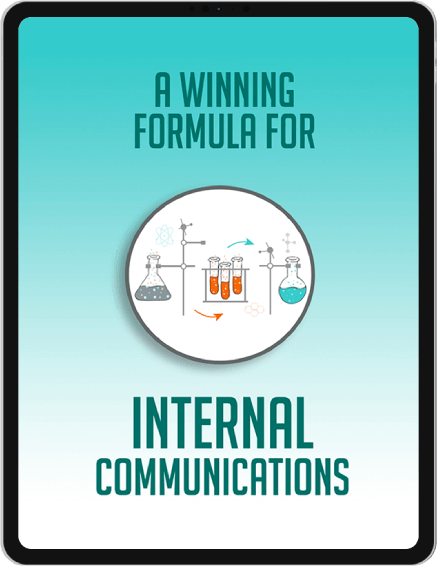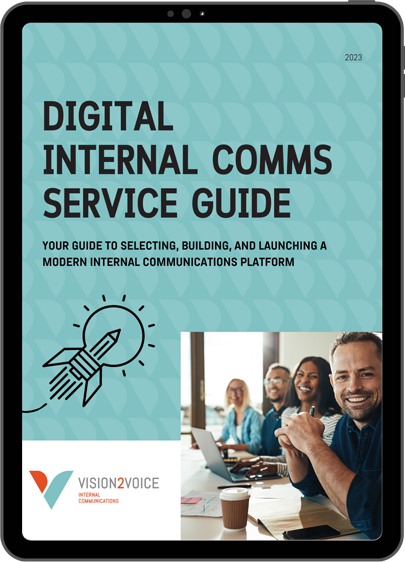Five Reasons Poor Employee Communications is Hurting Your Bottom Line

Engagement is a hot topic these days and it is easy to see why – engaged employees drive success. They are more productive, innovative and loyal; they build better quality products, and they provide your customers with fantastic service.
But here is a shocking statistic: Only one in five employees are engaged!
Wow! That means the other 80% of your employees are not contributing as much as they could and they may even be looking for another job.
So how is poor employee communications contributing to a lack of engagement and hurting profitability and performance?
1. Lack of Vision and Direction
Employees need inspiration and communicating a clear vision will rally your people and get them all working towards achieving a common goal. Take the case of Telus – in 15 years it doubled its revenue and consistently delivered on all metrics in the competitive telecommunications industry and has 85% employee engagement, which is a world best. One critical ingredient to this success was that the company consistently communicated a clear vision and the business strategy to get them there.
Do you have an internal communications strategy that is aligned with your business strategy and articulates a clear vision that helps everyone understand your business goals and motivates and inspires your employees?
2. Poor Brand Identity
A strong brand identity is important to your reputation and is essential to your ability to attract and retain customers. But your brand isn’t your logo and it is certainly not managed by your advertising agency. Your brand is rooted inside your organization and it is your employees who live and breathe your brand and deliver on your brand promise.
Does your employee communication program build an emotional connection with your employees? Does it contribute to your corporate personality with a clear, consistent and authentic voice? Does it help people understand the values that underpin your organization’s activities and drive decision-making?
3. Productivity
It is one thing to provide people with vision and direction, but you also have to give them the tools they need to do their jobs. Wasted time is wasted money and frustrating your employees with a lack of information or direction is not good for business.
A survey of companies with 100000 or more employees, found an average loss of $62.4 million due to time spent looking for the right information. Studies of smaller companies have turned up similar results with costs for companies with as few as 100 employees estimated at $420,000 a year (that’s almost half a million dollars folks!!!!). On the flip side, Cisco Systems, IBM and Oracle all have measured the impact and benefits of their corporate intranet sites at over $1 billion.
Does your organization provide employees with easy access to clear information? Do you leverage information technology to break down internal silos, foster collaboration and promote interaction?
4. Resistance to Change
When people are not inspired, involved, and informed it becomes harder for them to change. They don’t understand why the change is happening, they are not part of the change process, and they don’t have the desire, tools and knowledge to make the switch.
Change is a necessary fact of life for any organization that wants to survive and thrive in today’s world. Complacency is a huge risk for organizations but the difficult journey of change and transformation can turn out to be a nightmare if you have people who think the ‘light at the end of the tunnel is a train’ (I heard this from a client – yikes!).
5. Employee Retention
The cost of employee turnover is downright shocking. According to Ceridian, the annual recruitment costs to replace disengaged workers who left their jobs is $5 billion. And it can cost up to one third of an individual’s salary to find and onboard a replacement. Bill Gates once said, “The inventory, the value of my company, walks out the door every evening.” What does communication have to do with making sure those people return to work every Monday morning with a smile on their face?
Turns out that communication has quite a lot to do with it. According to the latest research, top employees stay for two reasons: the ‘opportunity to do their best’ and ‘mission and purpose’. Organizations that inform, involve and inspire their people help to build a positive culture and climate, providing information and tools so that people can do their best work. And, they are also able to connect their employees work to the broader mission and purpose of the company. Good communication programs bring to life how the work of employees makes a difference. I worked with one company that was in the business of producing life saving medical products. When a local Olympian came forward to say that one of the company’s products saved her life, my team arranged for her to speak at a quarterly employee meeting. This event had a positive and lasting impact on people by telling a story of the how the work they did made a difference in a young woman’s future.
Does your organization invest in employee communications to connect every day activities with something bigger? Do you have the communication tools in place to enable and empower your people? Do you listen to your employees in a genuine effort to understand them?
Add up these five factors and do the math. I hope I’ve got you thinking about how a great employee communications strategy and program can boost performance, productivity and growth.
Give us a call – we can help.

A Winning Formula for Internal Communications
Read The Free eBook
Our eBook shares our unique formula for building business culture and driving success. Find out the 3 key factors in attracting, inspiring and retaining high-calibre talent. Get your free copy when you subscribe to our newsletter. Be the first to know about new blog posts and stay up to date with industry news.
Download the ebook


